The PolarPro Apex is a tabletop tripod that was released alongside the Traverse strap mount and the Belay camera strap as part of PolarPro’s new Quickdraw product series. PolarPro is traditionally known for drone filters and camera filters, but they began branching out into products for larger cameras with their Summit filter system. This new Quickdraw product series pushes further into new markets.
PolarPro Apex Tripod Versions
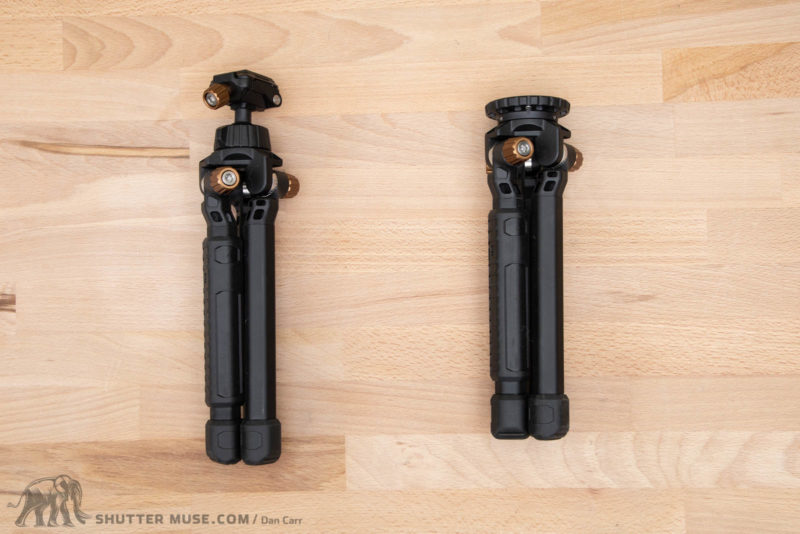

There are two versions of the Apex tripod. One comes with a built-in ball head and the other has a flat base for you to use your own ball head. Both versions are the same price. It would have been far better to design one tripod with a removable head. That way you could start off by using the included head and then upgrade at a later date to use a better head.
For reasons we will be getting on to, you don’t want to buy the one with the built-in head anyway, so it has become a moot point. But I don’t understand the logic in wanting to lock people into one design or other. At $140, these tripods are not cheap throwaway devices. You need to be delivering some adaptability.
Tripod Design and Function



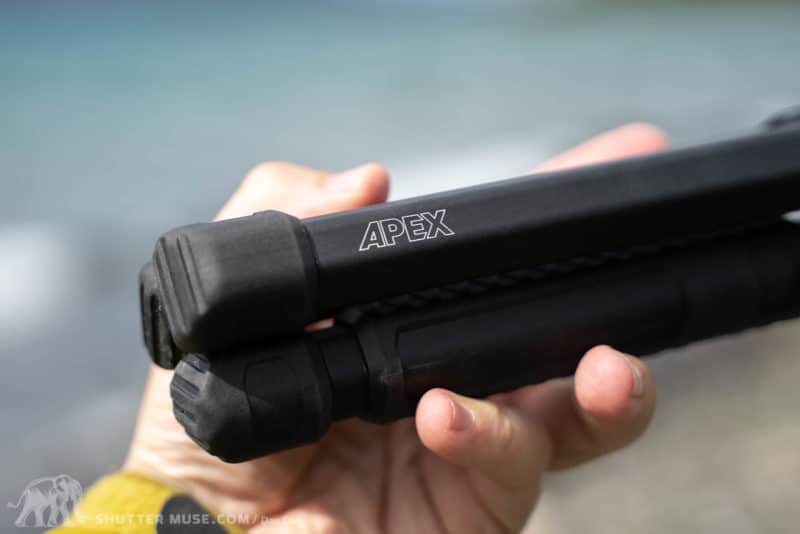
Size and Weight
The Apex tripod is an odd size. PolarPro says that “at only 16oz” it’s a lot less weight than a travel tripod. And while that might be true, it ignores the fact that at 16oz this is incredibly heavy for what is ostensibly a tabletop tripod. The popular Feisol tt-15 tripod weighs only 6oz, and there are plenty of other ones that come in at even lower weights.
It could be argued that the Apex is taller than most tabletop tripods. This is true, but only by a matter of 2-3 inches. And once you have a tripod that doesn’t have any collapsible legs, realistically you are going to be relying on the height of nearby objects. The slight added height of the Apex isn’t going to make your shot, and the tripod is all the heavier for it. There are even carbon tripods that are cheaper than the Apex that actually does have 2-section legs, and does extend considerably higher. See the LeoFoto LS-223C.
Those Leg Locks
Now we get onto the leg “TiltLocks” as they call them. On any other tripod when you want to take a photo you splay the legs open and set it down on your chosen surface. A process that takes less than 1 second with the several other small tabletop tripods I have in the office. Then you finesse the camera angle using the tripod head.
With the Apex tripod, you need to individually unlock each leg using the knurled knob. If you want to make sure each leg is set to the same angle you then have to squint very carefully at the tiny numbers on the locks to make sure the teeth are all lined up in the same place on all three legs. This drove me nuts. What is the point? Just to be different? it takes forever compared to any other tripod, and then you have to unlock them all to put the legs away afterwards.
Not helping this annoyance was the fact that the laser-etched numbers were in different places on different locks. Sometimes the number would sit on the spike of the tooth, and sometimes opposite the trough. Which number is it set to?!? Add this to the list of quality control issues.
On their website, PolarPro sells this TiltLock feature by saying there are 144 leg position options. But why would I want that many options? Leg position locks on tripods are there to make large sweeping changes. Once you have it roughly right, you use the tripod head to position your camera to perfection.
That is how a tripod works. Why would you want to fuss with making tiny angle changes on the tripod legs when you can change the camera angle on the ball head so simply? There’s a fundamental disconnect between the ideas here and the way that photographers actually want to work. What photographer ever stood in the field and said: “gee, I sure wish I could adjust one of my legs by just 5 degrees.”
Stability
The Apex tripod head is rated to 3lbs. One of, if not the lowest tripod head weight rating I have ever seen.
A 3lb rating is a joke for a tripod of this bulk and weight. This means that you can’t even put a Sony 24-70mm + Sony a7R IV on this tripod without it being over the specified weight limit. This would be about 3.5lbs. As far as I can tell, some of PolarPro’s own promo material for this product is using camera setups that go beyond their stated weight rating.
And you know what, I’d even question the rating. No matter how hard I cranked on the ball head lock, I couldn’t get it to lock solidly. I could always continue to move it. I even spent time applying a comical amount of force to it that you’d simply never use in the field, and I could still push the camera around. The ball head lock simply doesn’t work well enough for anything more than a mobile phone. It’s inexcusable when there are sub-$20 ball heads on the market that are many times better.
Oh, and those ball heads? They have panning bases on them. The head on the Apex doesn’t have a panning base.
What about the legs?
The legs of the Apex are aluminum but if you look closely at the top part of the leg where it mates with the TiltLock, you’ll see this part is plastic. As soon as you put any weight on this tripod, these plastic parts flex an unnerving amount. Apparently, the legs are rated to 25lbs, but there is no way I would trust them to anything like that. They give you absolutely no confidence, and just feel flimsy compared to other similar styles of tripod. My pocket-sized RRS TFA-01 tabletop ‘pod doesn’t flex a bit with a 20lb load on it, and I can fit that in my back pocket! Costs less, too.
Again, this is all a shame. If it had only been the ball head that was terrible, I could at least have found a positive way to use the product by putting a good ball head on the Base version of the Apex. But then you’d still be plagued by the TiltLocks, heavy weight, bulky size and questionable rigidity.
Leveling the ball head

The head has no bubble level so there are three lines pained on the ball to give you an idea when the head is level. At least that is the idea. In practice, as you can see from the second photo, if you line up the lines to “level” the head, it’s actually off by about 10 degrees.
Vertical Orientation


For shooting vertically the head features a unique flip design instead of the typical drop-notch found on all other ball heads. Perplexing to me was that when you flip the camera into the vertical position, it actually flips it about 95 degrees instead of 90. If you had previously been shooting horizontally and got things levelled, you now have to wrestle with the head to tilt your horizon level again.
But the problems don’t stop there. The flip mechanism has no lock. That means that when you flip it up, then loosen the ball to tilt the camera horizon to the right, trying to rotate the camera to the right doesn’t move the ball. Instead, it simply tilts the flip mechanism back toward the horizontal. You end up doing this ridiculous dance with your hands and fingers trying to stop the flip mechanism from moving while you deal with the ball head lock.
The second issue with the non-locking flip mechanism is that if you pick up your tripod between shots and walk around with it, you have to keep the tripod perfectly level unless you want the camera to simply flop about. Yes, you can tighten the flip mechanism with a hex tool, but that is not something you are going to be continuously doing in the field.
Honestly, a dumber tripod head design I have never seen. I simply do not understand how this got off the computer and into a production product. Obviously, I went out and tested these things in the field, but what’s even more infuriating is that I had honed in on all of these issues in my office within 5 minutes of unboxing the tripods. To me, these faults and shortcomings were just that obvious.
PolarPro Tripod Plate
When buying the Apex tripod with the ball head, you get an Arca compatible tripod plate with it. I actually received two plates because one came with the Traverse strap mount that I’ll be talking about in a different review.
The plates design is fine, but the rubber grip on one of mine was slightly deformed from being poorly applied. What was worse, far worse in fact, was that neither of the screws in the plates were correctly machined to fit the supplied hex tool. With one of the screws, I was completely unable to insert a standard hex tool into it (supplied with the tripod) because it was so poorly machined that the hole was simply not hexagonal. The second screw head on the second plate was barely any better. On that one, I was able to partially insert the hex tool to gain just about enough leverage at some angles to tighten it into a camera.
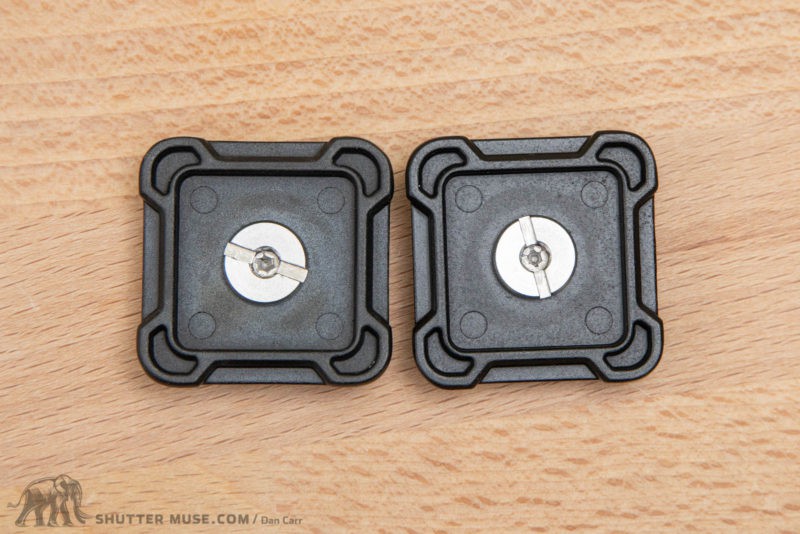
It’s clear that corners and costs were cut when procuring these screws, and such things only let down the whole product. Imagine buying this expensive tripod and then not being able to use it because you can’t screw the tripod plate into the camera due to a faulty 1cent screw. The fact that both the screws on both plates were faulty, from two different products, is just embarrassing. Also just one example of several quality control problems I saw with this tripod.
If you’re going to make products that compete with other brands at the same price point, there needs to be some consideration of what the competition is putting into the marketplace. Below you will see a photo of the Peak Design Arca plate. The machining is beautiful in every way, and you can clearly see how perfect the anodized hex screw is. By comparison, the wonky screws on the PolarPro plate look like they came out of a school shop class project. I was hesitant to even screw them into my expensive camera because I had zero confidence that the screw thread was machined to any better standard. and wouldn’t just strip the 1/4″ 20 socket and cause a costly repair.
I advise you to click the images to enlarge them in your browser and see the night and day difference.
Conclusion
I don’t take any pleasure in writing review conclusions that are predominately negative, but in this case, I’m left with little choice. I cannot recommend this product to anyone.
The Apex tripod is frustrating to use due to the screw-locks on every leg. These need to be individually loosened just to set the tripod up, and then you need to pay additional attention to leg positions by peering at tiny numbers on the leg clamps. It takes a needlessly long time to set this tripod up compared to literally every other tripod on the market. Of course, it all needs to be repeated in reverse to close the tripod.
The Apex is touted as “95% aluminum construction”, but unfortunately the 5% that is plastic is the part that joins the legs to the top of the tripod. This is exactly the part that you don’t want to be made of plastic. As a result, even the tiniest amount of weight on the tripod causes everything to flex in an unnerving way. Despite the tripod looking chunky and solid from a distance, it feels anything but. All the more remarkable considering the heavy-for-a-tabletop-tripod weight of 16oz.
Yeah. I know they call it a “travel tripod” and not a tabletop tripod, but that’s simply ignoring all common industry understanding of tripod features and product positioning. Consumers are not stupid, they are going to look at this and compare it to a tabletop tripod, not travel tripods. And to be honest, it would review just as badly if I compared it to a travel tripod because it simply doesn’t have the features to match that category either.
On the version of the Apex that includes the ball head, good luck getting it locked tight enough to clamp anything heavier than your phone. Even then, after tightening the ball with all my might, I could always get it to slip. When trying to release it just enough to make minor adjustments, it releases abruptly and entirely, leaving minor camera position changes a chore. There are sub $20 proper ball heads on the market that do an infinitely better job than this, and those heads also have a panning base, which the Apex head does not.
The vertical flip function of this head inexplicably tilts more than 90 degrees, and because it doesn’t have a lock, it’s impossible to adjust the camera’s horizontal position in the vertical mode. If you move the camera, the flip mechanism simply collapses back on itself instead of adjusting the camera angle. There’s a very good reason why there are no other heads like this on the market. Infuriating to use.
If you absolutely must buy one of these Apex tripods for some reason, at least save yourself some of the frustration and buy the Base version that just has a flat plate on top and no ball head. You’ll still have to deal with the fiddly leg locks, slow setup time. heavyweight and questionable feeling rigidity, though.
On top of the design features that just don’t work for me, I saw a host of quality control issues. From misaligned leg log engravings to laughably incorrect “level” lines on the ball head, totally non-functional tripod plate screws and a poorly applied rubber grip on the plates.
I’m struggling to think of another product that has missed the mark for me as much as this one. I spent quite some time trying to imagine how this could even happen, and can’t say I came to a clear answer because I don’t know how PolarPro’s design’s R&D process works. It’s as if a non-photographer designed the tripod to look cool on a computer screen. Then pre-release testing, if there was any, was performed by a bunch of YouTube influencers who simply nodded silent approval because they feared losing some association with a cool brand. This doesn’t even really explain how the product seems to ignore the specifications of existing products. It just seems to have been designed in a vacuum.
Will PolarPro take these criticisms on the chin and step up to the plate to address them in the future? We’ll have to wait and see.
Retail price for these tripods is $139.99. My advice for a small tripod would be to buy the Feisol TT-15 Carbon Tabletop Tripod for $69. It’s half the price, less than half the weight(!), smaller, simpler to use and much more stable.
Where to Buy
The PolarPro Apex tripod is available from the following vendors:










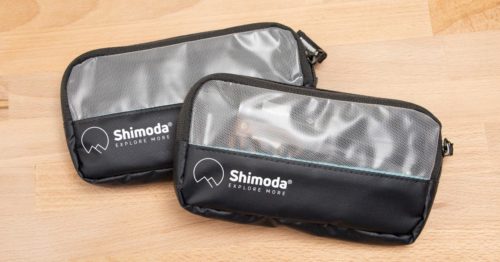
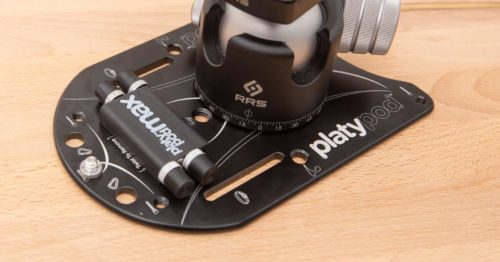
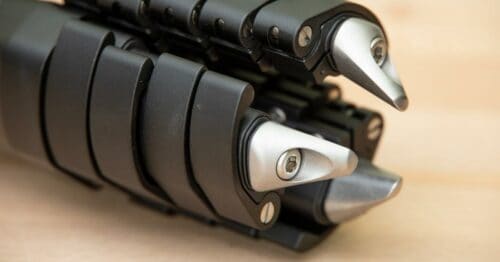
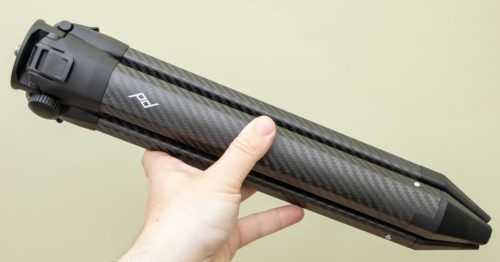
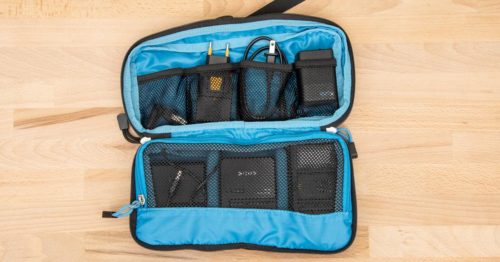

Hi Dan. This review reminded me of an incident that happened a few years back. I bought the Canon hand strap (screws into the tripod base and gives a loop for holding the camera with one hand) as I like to hold my camera like that rather than a strap. After about 2 years use it broke causing damage to the camera 5D MK ll and one of my L series lenses. I was horrified to discover the plate was hard PLASTIC with no metal reinforcing at all inside. There ensued a massive argument with Canon UK to try to get them to repair for free. No way, it had never happened before they said, and there was nothing wrong with the design or manufacture!! In the end with speaking to different depts in different countries(!) each time and numerous letters threatening writing to camera mags etc. they reluctantly agreed a half share of the liability. I bought a MK lll not long after as the MK ll never felt right after the repair. The lens was fortunately just cosmetic damage.I bought a third party system after that with all metal construction. Couldn’t believe Canons attitude or the lack of quality of their own product.
Sorry to hear that story! I can only imagine how that would have felt when your gear went crashing to the ground.
I find it amazing that you absolutely tore into the leg design you couldn’t fathom without attempting to determine what the actual logic might be. Mocking them for not asking how people might actually want to use it in the field without realising that is precisely why they move independently. It’s obviously got nothing to do with your absurd straw man of camera angle. The clue is in the marketing pictures and in watching anybody vaguely competent use one. It’s for uneven surfaces, rocks, etc. You can just flip the legs at different angles to rest on uneven surfaces reliably in a way you simply couldn’t with another tripod even with adjustable legs. If you can’t see that, you just lack imagination.
What you’ve done is write a review slamming a wheel for being crap at rolling because you got it and just tried flipping it over, never thinking there might be a more appropriate way to use it.